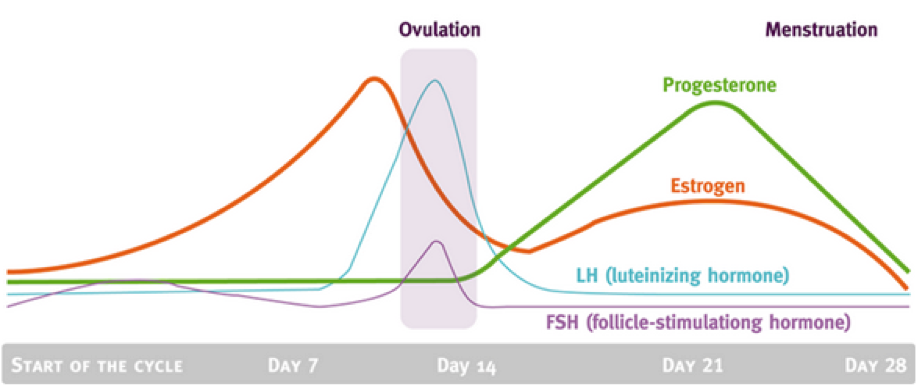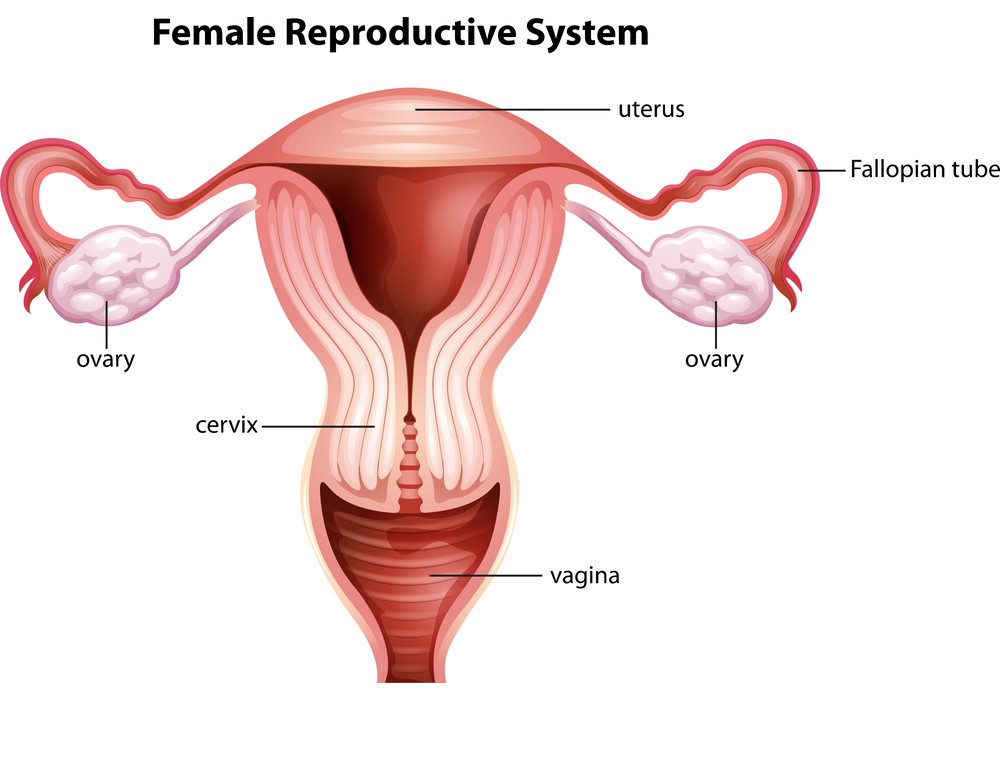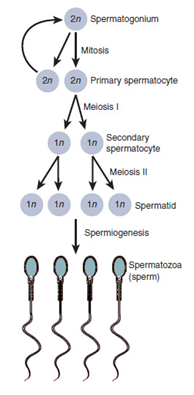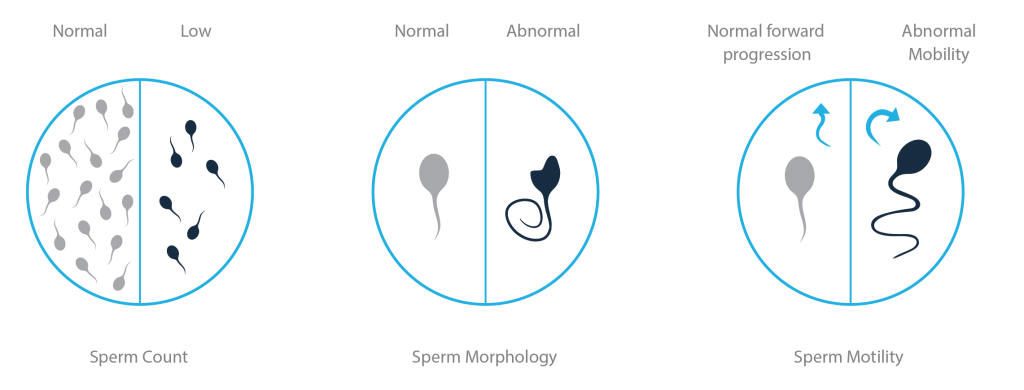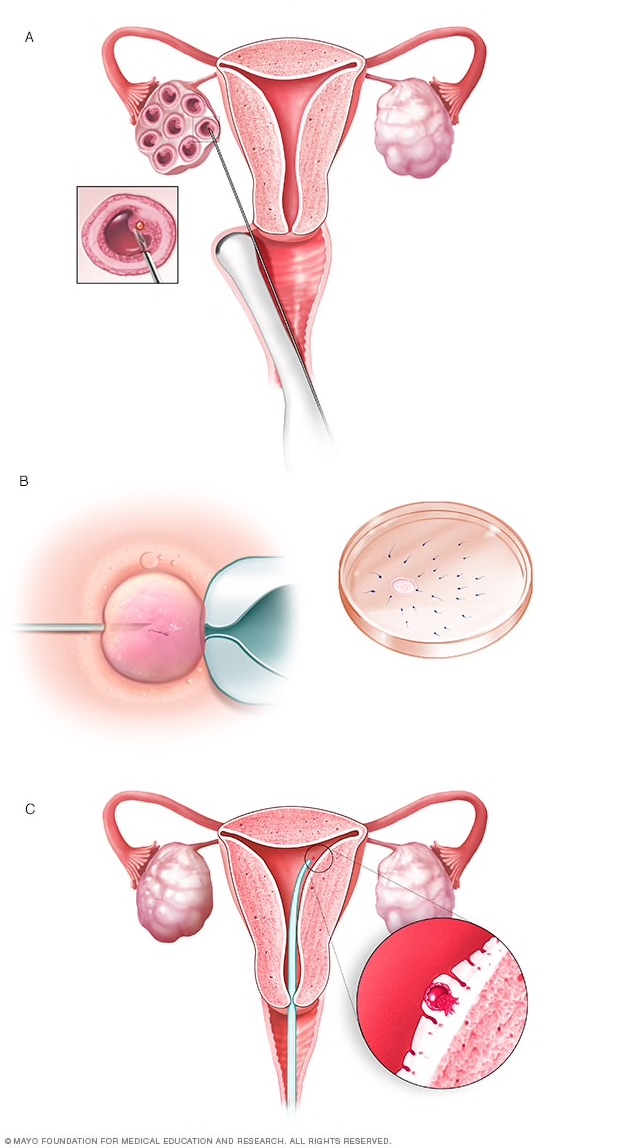Table of Contents
Infertility Powerpoint
Infertility
Infertility is the inability of a person to naturally reproduce. The World Health Organization (WHO) defines it as a “disease of the reproductive system defined by the failure to achieve a clinical pregnancy” [1]. Within the field of reproductive health, infertility suggests a deficiency within an individual that does not compromise their physical health, nor is it life-threatening [2].
According to recent studies by the World Health Organization, approximately 8-10% of couples are facing some type of infertility problem[3]. Globally, 50-80 million people are facing the problem of having a complete and integrated family [3]. In developed countries, infertility rates range from 3.5% to 16.7%, while in less developed countries, rates of infertility range from 6.9% to 9.3% [3]. In Canada, the prevalence of infertility in 2009–2010 was between 11.5% to 15.7%. Current research has suggested that over time, the prevalence of current infertility has increased in Canada [4].
Female Infertility
Female infertility can be characterized by the inability to get pregnant, or either carry a fetus to full term after one year of unprotected sex in women under 35 [5]. This changes to 6 months for women who are older than 35 y/o [5]. There are two types of infertility, primary and secondary infertility. Primary infertility refers to the inability to have a live-birth ever, whereas secondary infertility refers to those who are unable to have a second live-birth [1].
Pathophysiology
In ovulatory related infertility, the imbalance of hormone levels is a major factor. Anovulation is when a woman is unable to ovulate, and for some cases, are unable to menstruate [6]. During the follicular phase of the menstrual cycle, the hypothalamus sends a signal to the pituitary gland release follicle stimulating hormone (FSH), which then allows for the maturing of an egg [5]. An increase in estrogen helps thicken the lining of the uterus [5]. Higher estrogen levels then result in a release of luteinizing hormone, which in turn initiates the release of an egg[5]. In the case of anovulation, the egg is not being released to being with. Due to this imbalance of FSH, LH, and estrogen, there is either infrequent or a complete absence of periods that results in infertility.
In tubal related infertility, there are a varying number of diseases that can lead to it, with one of the leading causes being endometriosis. This occurs when excessive endometrial tissue is growing outside of the uterine cavity, usually surrounding reproductive organs such as the fallopian tubes[7]. This can result in ectopic pregnancy, or inhibit fertilization of an egg by preventing sperm from reaching it [2].
Causes
There are four main causes of infertility: ovarian factors, tubal factors, uterine factors, and lifestyle factors [2].
- Ovarian
- This occurs when there are abnormalities in the ovum, mainly leading to anovulation. This is when the oocyte is unable to be released from the follicle [2]. Some common triggers for ovarian related infertility include chemotherapy and Polycystic Ovary Syndrome [6].
- Tubal
- This occurs when the fallopian tubes are either damaged or blocked, due to which the eggs cannot be transported into the uterine cavity [8]. Factors related to this include STDs, such as chlamydia, pelvic inflammatory disease, or endometriosis [6].
- Uterine
- This occurs when there are abnormalities in the uterus, not allowing for implantation. Tumours, such as leiomyomas, found in the uterus interfere with implantation, either not allowing the egg to be implanted, or increasing chances of miscarriages [9]. An abnormally shaped uterus is another factor that directly impacts infertility [2].
- Lifestyle [8,9]
- Age: In women over 35 years of age, the chances of pregnancy start to decrease. This is due to the lower quality and number of eggs available. It also increases the chances of miscarriages and other birth defects.
- Smoking and alcohol: both can cause an early menopause
- Exercise: over-exercising is known to eliminate periods in women
- Weight: extreme weight gain or weight loss can impact fertility by causing anovulation.
- Emotional and physical stress: both are known to negatively affect fertility in a woman.
- STDs: sexually transmitted diseases, such as chlamydia, interrupt oocyte implantation in the uterus.
- Unknown: in some cases, the cause of infertility cannot be recognized.
Male Infertility
Male infertility is the inability to impregnate a fertile female, after one year of unprotected intercourse [10].
Pathophysiology
The production of sperm requires normal function in multiple organs, not only the testes but the hypothalamus and the pituitary gland which are responsible hormones that signal and trigger the organs responsible for sperm production [11]. Sperm is generated in the seminiferous tubules, which are microscopic tubes which contain Germ cells (“sperm-producing cells”). Sertoli cells are responsible for the growth and maturation of undeveloped sperm cells, providing nourishment to the Germ cells and assist in sperm development [12]. The mature sperm are then stored in the epididymis [13].
For sperm production to occur, the pituitary gland which is controlled by the hypothalamus releases follicular-stimulating hormone (FSH). FSH stimulates Sertoli cells and will begin the process of sperm production [14]. Testosterone is a hormone created by Leydig cells which get stimulated by Luteinizing hormone released by the pituitary gland. Testosterone also is required for sperm production by stimulating Sertoli cells, initiating sperm production [15].
During ejaculation, sperm cells are moved from the epididymis to the beginning of the urethra, and then seminal plasma is transported and both sperm and seminal plasma are released from the body called semen [16]. Seminal plasma acts as a vehicle to transfer, protect, and provide nourishment to sperm as it exits the body. Abnormalities in any stage of the sperm or ejaculation process can lead to infertility [17].
The main places in which infertility occurs is:
- Growth and Maturation The cells responsible for sperm production must be able to produce and provide nourishment to developing sperm cells. Infertility in this stage typically occurs due to low testosterone[12].
- Ejaculation: During ejaculation where the sperm meets the seminal plasma and is released from the body [16].
- The concentration of semen: When the ratio of sperm to seminal plasma is low, can cause infertility, as it will decrease the odds in which one of the sperms will fertilize the eggs [18].
- Sperm quality: sperm must be motile and must be functional in order to properly fertilize the egg [19].
Causes
Medical issues that can cause Infertility:
- Varicocele: the veins responsible for draining of the testicles are enlarged. This leads to low sperm production and a decrease in sperm quality which may lead to infertility. Other symptoms of this disease are rare [20].
- Infection: many infections can affect the sperm generation, sperm health, or the transportation of sperm. This can be caused by inflammation or the organs of the reproductive system or some sexually transmitted infections (ex. HIV). May lead to permanent damage [21].
- Ejaculation issues: Sometimes during ejaculation, semen will end up in the bladder rather than exiting the body, this is called retrograde ejaculation. Many conditions can cause this such as a spinal injury, diabetes, medications, or post-surgical complications [22].
- Autoimmune disease: antibodies are part of the immune system and are meant to protect the body against foreign and harmful substances. However, they can mistakenly identify sperm as harmful and destroy them [23].
- Tumours: cancers or non-cancerous tumours can affect the reproductive system if the tumour is on an organ required for sperm production or release [24].
Environmental Causes:
- Chemicals: exposure to certain chemicals for extended periods of time can lead to infertility issues, such as pesticides and herbicides[28].
- Heavy metals: exposures to certain metals such as lead can lead to infertility[28].
- Radiation or X-rays: exposure to radiation or X-rays can negatively affect sperm production and may take a long time to return to normal levels[29].
- High temperatures: Elevated temperatures of can impair sperm production[30].
Lifestyle choices:
- Drug use: The use of anabolic steroids can lead to shrinkage of the testicles and sperm production to decrease. Other types of recreational drugs have also been linked to infertility[31].
- Alcohol: found to lower testosterone levels, which leads to a decrease in sperm generation[32]
- Smoking: men who smoke tobacco have been found to have a lower count compared to those who don’t[32]
- Stress: has been found to affect hormonal balance, and may lead to changes in sex hormones negatively affecting fertility[27]
- Weight: obesity has been found to impair fertility, such as hormone changes and negatively impacting sperm quality[18].
Societal Pressures
With both male and female infertility, individuals can face a lot of social, psychological, and economic consequences [33]. Women have described a sense of losing their “womanhood” if they are unable to conceive [33]. This can lead to a psychological strain with feelings of pain, deep sadness, bitterness, guilt, loneliness, and desperation [34]. In a focus group conducted with women, many cried during the interview and expressed they had faced episodes of burnouts and breakdowns [34]. Infertility can also lead to marital instability and breakups [34]. The women interviewed in this study explained how they had a fear of abandonment, divorce, and/or infidelity from their partners. They also seem defenceless to threats to their relationship [34]. In addition to these worries, women in the focus groups explained the abuse they faced from their husbands, whether that was shouting, cursing or physical pain that they experienced [34].
With this, however, men too encounter stigma and hardships with male factor infertility. There is a lot of secrecy that surrounds the diagnosis of male factor infertility, whereby sometimes the female partner takes the blame even if she has no problems [35]. Inaccurate media reports tend to combine male infertility with impotence although there is no information that infertility impacts physical aspects of potency [35]. A study completed by Wischmann and Thorn in 2013 described how men’s perceptions of infertility vary from country to country. Through their analysis, males in South Africa showed depression scored nearly one standard deviation greater compared to the scores of males in Germany with the same questionnaire [35]. These results show a greater level of impact on men who have a stronger pronatalistic cultural background [35].
Dealing with either male or female infertility can also be a burden economically [33]. This ranges from expensive treatments, families taking away social security, and in some nations families take back any inheritance women may have [31]. In other regions, men can be forced out of work which can further contribute to the cycle of poverty [33]. Planned Parenthood in addition to support groups are not well established in many developing countries [33]. These resources provide the opportunity with support, family planning shrives and knowledge on health, options, and treatment options [33]. The psychological and social implications of involuntary infertility are exacerbated due to a lack of support [34].
Treatment
In terms of treatment options for an individual that is suffering from male infertility, these can vary depending on the case and severity of the issue. One treatment option is surgical procedures. These are most commonly implemented when an individual has an obstruction in the vas deferens [36]. This can occur naturally or if that person has had a vasectomy in the past [36]. This obstruction can be surgically removed allowing for fertility. The side effects of this treatment option will depend on the success of the surgery. With a successful procedure, there is a chance of minor pain in the groin. The next treatment option is if the cause for the infertility is infectious in nature. This will require a course of antibiotics to help remove the bacteria accumulation that is blocking sperm production. In fact, in a study done by Dr. Wall couples that were on antibiotic treatment for an infection that caused infertility reported a 28% successful pregnancy rate [37]. If the problem exists during intercourse there are a variety of medications that can be used to help address erectile dysfunction. Finally, infertility could come from a drop in hormone levels. This can include a drop in testosterone production as an individual ages. There are hormonal replacement drugs that can be taken to help boost the body’s natural production. This endogenous treatment has shown to have a positive rating of 66% in those affected and has a 30% chance of pregnancy success[38]. For both erectile dysfunction and hormonal therapy, the common side effects are behavioural changes due to the change in hormonal concentrations. It is important that individuals address and cope with these behavioural modifications. Overall, there are various treatments for male infertility as an individual’s age.
When it comes to female infertility there is a lot more complex as women reach an age where they are biologically unable to have children. Therefore, the treatment options for female infertility depend heavily on age. More specifically looking at the effects on luteinizing hormone and follicle stimulating hormone. There are drugs such as Clomiphene citrate, which will help to endogenously increase LH and FSH production [39]. There are also gonadotropins, which will target the ovary and increase egg production [37]. Both of these drugs target infertility directly. There are also indirect ways of addressing infertility. For example, metformin can be used to help address insulin sensitivity and that has shown to be a cause of infertility in women [39]. Also, Bromocriptine can be used to act as a dopamine agonist during ovulation if the problem is caused by excess prolactin [39]. Therefore, depending on the case there are a variety of different treatment options available. However, there are side effects for these drug interventions, specifically with the drugs revolving around hormonal imbalances. There is an increased risk of having twins or triplets [39]. There is also the potential for overstimulation of the ovaries, which can cause inflammation. This will make the pregnancy unbearable and in worst case series could result in a miscarriage [39]. Finally, there is an increasing likelihood of tumour formation for women that are on hormonal therapy and do not get pregnant. The next treatment option would be surgical intervention. This includes laparoscopic surgery to help remove any potential obstructions that could be causing infertility [39]. Any complications from this procedure will depend on the success of the surgery. Finally, there is the option of performing in-vitro fertilization. This is where the mature eggs are extracted from the women and are fertilized, in a lab setting, with the sperm from the male. This is then implanted back into the uterus to allow for a normal pregnancy to occur [39]. This treatment must be aided with hormonal therapy, especially for post-menopausal women. There is also the potential for miscarriage through this procedure. However, for women that are post-menopausal, this may be the only way to get pregnant. Therefore, female infertility presents a different set of symptoms that can be harder to address effectively.
Conclusion
Infertility is a public health issue that affects men and women. Female infertility is the inability to get pregnant or carry a fetus to full term. There are four factors that mainly influence female infertility which is ovarian, tubal, uterine and lifestyle. Male infertility is the inability to impregnate a fertile female, which is caused by various factors. Some causes of male infertility are due to medical issues, environmental factors and lifestyle choices. To diagnose patients with infertility doctors first look at medical history and do a physical examination. Some may also carry out some basic tests on both partners to see if there is a reason for not having achieved a pregnancy. Then if needed, the specialized test can be done at fertility clinics. Infertility is an issue that contains various social and economic burden.
Infertility is a health problem that requires appropriate treatment strategy [3]. Modern medical science has developed various therapies to assist reproduction over the last 20 years[3]. Some treatments available today for female infertility are hormone therapy and surgery. For males; surgery and antibiotics are used as treatment options. A possible future therapeutic is the use of stem cells. The ability to culture and manipulate stem cell from male germ cells has gradually facilitated research into male infertility[40]. There is research continually collected and tested to advance our knowledge in this field. With the knowledge we know and continue to gain, researchers are looking for ways to decrease the prevalence of infertility.
References
[1] Infertility definitions and terminology.(n.d). Retrieved from https://www.who.int/reproductivehealth/topics/infertility/definitions/en/
[2] Brugo-Olmedo, S., Chillik, C., & Kopelman, S. (2001). Definition and causes of infertility. Reproductive biomedicine online, 2(1), 173-185.
[3] Roupa, Z., Polikandrioti, M., Sotiropoulou, P., Faros, E., Koulouri, A., Wozniak, G., & Gourni, M. (2009). Causes of infertility in women at reproductive age. Health Science Journal, 3(2).
[4] Bushnik, T., Cook, J. L., Yuzpe, A. A., Tough, S., & Collins, J. (2012). Estimating the prevalence of infertility in Canada. Human reproduction, 27(3), 738-746.
[5] McLaren JF. Infertility evaluation. Obstetrics and Gynecology Clinics. 2012 Dec 1;39(4):453-63.
[6] Bhattacharya S, Johnson N, Tijani HA, Hart R, Pandey S, Gibreel AF. Female infertility. BMJ clinical evidence. 2010;2010.
[7] De Ziegler D, Borghese B, Chapron C. Endometriosis and infertility: pathophysiology and management. The Lancet. 2010 Aug 28;376(9742):730-8.
[8] Eniola OW, Adetola AA, Abayomi BT. A review of Female Infertility; important etiological factors and management. Journal of Microbiology and Biotechnology Research. 2017 Mar 31;2(3):379-85.
[9] Vander Borght M, Wyns C. Fertility and infertility: Definition and epidemiology. Clinical Biochemistry. 2018 Mar 16;62:2-10.
[10] De Kretser, D. M. (1997). Male infertility. The lancet, 349(9054), 787-790.
[11] Phillip, M., Arbelle, J. E., Segev, Y., & Parvari, R. (1998). Male hypogonadism due to a mutation in the gene for the β-subunit of follicle-stimulating hormone. New England Journal of Medicine, 338(24), 1729-1732.
[12] Brinster, R. L., & Zimmermann, J. W. (1994). Spermatogenesis following male germ-cell transplantation. Proceedings of the National Academy of Sciences, 91(24), 11298-11302.
[13] Bedford, J. M. (1975). Maturation transport and fate of spermatozoa in the epididymis.
[14] Dierich, A., Sairam, M. R., Monaco, L., Fimia, G. M., Gansmuller, A., LeMeur, M., & Sassone-Corsi, P. (1998). Impairing follicle-stimulating hormone (FSH) signaling in vivo: targeted disruption of the FSH receptor leads to aberrant gametogenesis and hormonal imbalance. Proceedings of the National Academy of Sciences, 95(23), 13612-13617.
[15] Saez, J. M. (1994). Leydig cells: endocrine, paracrine, and autocrine regulation. Endocrine reviews, 15(5), 574-626.
[16] Marberger, H. (1974). The mechanisms of ejaculation. In Physiology and genetics of reproduction (pp. 99-110). Springer, Boston, MA.
[17] Manjunath, P., Bergeron, A., Lefebvre, J., & Fan, J. (2007). Seminal plasma proteins: functions and interaction with protective agents during semen preservation. Society of Reproduction and Fertility supplement, 65, 217.
[18] Hammoud, A. O., Wilde, N., Gibson, M., Parks, A., Carrell, D. T., & Meikle, A. W. (2008). Male obesity and alteration in sperm parameters. Fertility and sterility, 90(6), 2222-2225.
[19] Van Waeleghem, K., De Clercq, N., Vermeulen, L., Schoonjans, F. R. A. N. K., & Comhaire, F. (1996). Deterioration of sperm quality in young healthy Belgian men. Human Reproduction, 11(2), 325-329.
[20] Practice Committee of the American Society for Reproductive Medicine. (2008). Report on varicocele and infertility. Fertility and sterility, 90(5), S247-S249.
[21] Rodriguez, R., Hernandez, R., Fuster, F., Torres, A., Prieto, P., & Alberto, J. (2001). Genital infection and infertility. Enfermedades infecciosas y microbiologia clinica, 19(6), 261-266.
[22] Crich, J. P., & Jequier, A. M. (1978). Infertility in men with retrograde ejaculation: the action of urine on sperm motility, and a simple method for achieving antegrade ejaculation. Fertility and Sterility, 30(5), 572-576.
[23] Wallach, E. E., Bronson, R., Cooper, G., & Rosenfeld, D. (1984). Sperm antibodies: their role in infertility. Fertility and Sterility, 42(2), 171-183.
[24] Carmignani, L., Gadda, F., Mancini, M., Gazzano, G., Nerva, F., Rocco, F., & Colpi, G. M. (2004). Detection of testicular ultrasonographic lesions in severe male infertility. The Journal of urology, 172(3), 1045-1047.
[25] Bak CW, Seok HH, Song SH, Kim ES, Her YS, Yoon TK. Hormonal imbalances and psychological scars left behind in infertile men. Journal of andrology. 2012 Mar 4;33(2):181-9.
[26] Maduro, M. R., & Lamb, D. J. (2002). Understanding new genetics of male infertility. The Journal of urology, 168(5), 2197-2205.
[27] Cousineau, T. M., & Domar, A. D. (2007). Psychological impact of infertility. Best Practice & Research Clinical Obstetrics & Gynaecology, 21(2), 293-308.
[28] Hruska KS, Furth PA, Seifer DB, Sharara FI, Flaws JA. Environmental factors in infertility. Clinical obstetrics and gynecology. 2000 Dec 1;43(4):821-9.
[29] Li, H. Y., & Zhang, H. (2013). Proteome analysis for profiling infertility markers in male mouse sperm after carbon ion radiation. Toxicology, 306, 85-92.
[30] Jung, A., & Schill, W. B. (2000). Male infertility. Current life style could be responsible for infertility. MMW Fortschritte der Medizin, 142(37), 31-33.
[31] Buchanan, J. F., & Davis, L. J. (1984). Drug-induced infertility. Drug intelligence & clinical pharmacy, 18(2), 122-132.
[32] Pasqualotto, F. F., Lucon, A. M., Sobreiro, B. P., Pasqualotto, E. B., & Arap, S. (2004). Effects of medical therapy, alcohol, smoking, and endocrine disruptors on male infertility. Revista do Hospital das Clínicas, 59(6), 375-382.
[33] Rouchou B. Consequences of infertility in developing countries. Perspectives in public health. 2013 May;133(3):174-9.
[34] Dyer SJ, Abrahams N, Hoffman M, van der Spuy ZM. Men leave me as I cannot have children': women's experiences with involuntary childlessness. Human Reproduction. 2002 Jun 1;17(6):1663-8.
[35] Wischmann T, Thorn P. (Male) infertility: what does it mean to men? New evidence from quantitative and qualitative studies. Reproductive biomedicine online. 2013 Sep 1;27(3):236-43.
[36] Patel, A. P., & Smith, R. P. (2016). Vasectomy reversal: a clinical update. Asian journal of andrology, 18(3), 365.
[37] Wall, J., & Jayasena, C. N. (2018). Diagnosing male infertility. BMJ, k3202. https://doi.org/10.1136/bmj.k3202
[38] Khourdaji I, Lee H, Smith RP. Frontiers in hormone therapy for male infertility. Translational andrology and urology. 2018 Jul;7(Suppl 3):S353.
[39] Mayo Clinic. (2018, March 08). Female infertility. Retrieved February 25, 2019, from https://www.mayoclinic.org/diseases-conditions/female-infertility/diagnosis-treatment/drc-20354313
[40] Nayernia, K., Li, M., Jaroszynski, L., Khusainov, R., Wulf, G., Schwandt, I., … & Engel, W. (2004). Stem cell based therapeutical approach of male infertility by teratocarcinoma derived germ cells. Human molecular genetics, 13(14), 1451-1460.
